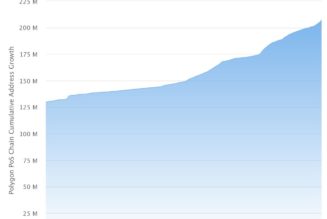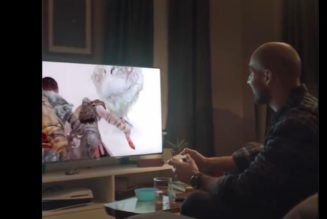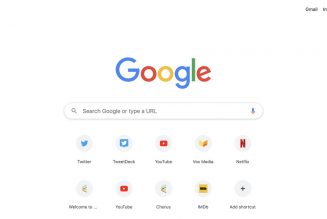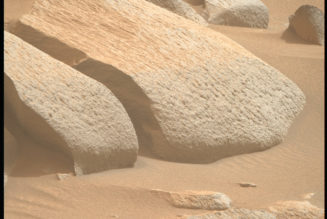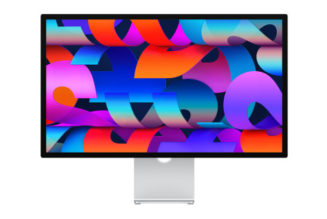Volume 3 of Love, Death and Robots covers a lot of ground: haunting alien landscapes, frighteningly realistic sea monsters, cute zombie apocalypses. But, even still, one episode in particular manages to stand out: “The Very Pulse of the Machine.” It’s a beautiful, lonely animated short about an astronaut named Martha (Mackenzie Davis) trapped on Io, a desolate moon of Jupiter, while possibly communing with the Moon as well — or maybe she’s just hallucinating. It’s based on a short story of the same name by Michael Swanwick and features an art style clearly inspired by the late French artist Jean “Moebius” Giraud.
Following the new season’s premiere, I had the chance to talk to Emily Dean, who directed the episode, about how the visuals came about, the challenges of adapting the short story, and why she found herself wandering a beach while wearing motorcycle gear. Also, spoiler warning: we discuss the episode’s ending and what it ultimately means.
This interview has been lightly edited for clarity.
What was your first contact with this short story? Did you know about it beforehand?
I was invited in by Blur Studio to read a bunch of short stories that they were considering for volume two. I read a lot of them, and I landed on “The Very Pulse of the Machine.” And I just fell in love with the story from the get-go.
What was it about it that stood out? Was there something that you thought would make it work particularly well for an adaptation like this?
I was really drawn in by the psychological element to the story and the notion of this female astronaut stranded on this moon trying to survive. And I really loved the female point of view, but I also loved this conversation that this character was having with this unknown entity throughout the story. And I thought that was very existential — not just because of the physical nature of trying to survive on a desolate moon but, you know, in being in conversation with something greater than one’s self. I found that very interesting.
It seems like some of that stuff might be hard to translate to animation. In the short story, there’s a lot of internal dialogue. How did you approach getting that psychological element across in a visual medium like this?
So Michael Swanwick, the author of the short story, has acknowledged that this was a very difficult story to adapt for a film. And great credit is due to Philip Glass, the screenwriter who wrote the script for this short story. Because, in the short story, there’s sort of more of an interiority to the character, and that is very difficult to portray in a sort of third-person way in filmmaking because you’re outside of the character watching the character go through these struggles. So that was a big challenge. We actually had to cut down quite a bit of the dialogue, the chatter, and so on, and externalize a lot of the interior emotions that Martha was feeling. And a lot of that came from the performance of Mackenzie Davis and just really putting a lot into that vocal work — and also in the animation of the character herself struggling in this environment and in the actual heightening the stakes of the environment and making the world feel very dangerous.
I’m guessing you saw the blog post that Michael wrote praising this adaptation. How did that feel? He seemed really psyched about what you guys did.
It was a great honor, honestly, and a lovely surprise.
:no_upscale()/cdn.vox-cdn.com/uploads/chorus_asset/file/23605809/VPM_5705_R.jpg)
Going back to what you were talking about with the vocal performances, how did you decide on how you wanted the Io entity to sound? In my head, the voice was a lot less human and more cryptic.
In animation, in the storyboarding phase, when we’re putting together the animatic, we do what’s called scratch vocals where we get to test out different reads. And, initially, we did have that very robotic monotone voice throughout. But we found it was very stunting and felt like we weren’t getting the poetry across and the movement and the rhythm of the whole story. So we ended up going with [Holly Jade] and she was absolutely fantastic.
How did you settle on the visual style? I feel like it could have gone a sort of darker, more desolate visual style as opposed to Moebius, which is very poppy and bright.
My personal style is very influenced by Moebius, and I love color. But, from my very first pitch, I came in and I said, “I would love to do a love letter to Moebius.” And I felt like, not that he’s exactly an unsung hero of science fiction, but I felt that, with Love, Death and Robots — because of its connection with Heavy Metal magazine — it was a fitting place for trying his style on-screen, which I hadn’t really seen done in a long time. From my very first pitch, I came in with a lot of artwork that beckoned back to Moebius. And I said, “I believe in this story because of its psychological elements, because of its communing with the outside world,” which is kind of thematic to Moebius and his work, especially his 40 Days in the Desert. It lent itself really well to this psychedelic visual style.
What was it like kind of coming up with some of those hallucinogenic scenes?
There was a lot of brainstorming. In my first pass, I pretty much stuck to Michael Swanwick’s story pretty closely, and we found that it was getting very long. And, secondly, we wanted to push some of the elements a little more to capture what the essence of the story was, more so than a literal translation. So, in subsequent passes, I would go into the edit bay, close the door, and just draw; put on music and just draw whatever feeling I got from the story, from the script, and put that into storyboards. There were a lot of crazy ideas, such as giant astronauts walking around. And those ideas eventually got whittled down, and you see a bit of it in the hallucinatory sequences.
But, for me, I really wanted to capture this underwater feeling. Because, for me, growing up in Australia, I used to go swimming, and I was always amazed at how much life there was underwater and how you were in a different world and how you have a surface layer to the world and then a subsurface layer. And this whole story, to me, was about how things are not all as you see them on the surface. It could be a desolate moon, but below, there’s thriving life.
Do you remember any ideas that were a little too outlandish to make it into the final product?
There were some technological limitations. At one point, I imagined Martha melting completely, her body was just melting in this psychedelic kind of way. And she was continuing to walk as little bits of globs were falling, floating from her body. And that proved very difficult to do. But we also felt that, creatively, we were probably going a little away from the story.
:no_upscale()/cdn.vox-cdn.com/uploads/chorus_asset/file/23605812/VPM_14669_R.jpg)
You worked with Polygon on this. Were there any particular challenges in translating the Moebius style to 3D?
So Polygon Pictures in Japan, they’re fantastic. And I give them incredible amounts of praise for all their hard work. But they come from an anime background, and so, bringing in this whole different style, which is very French, we actually had to work with some French artists to do some concept art to begin with, just to kind of demonstrate the difference in sensibility. From a creative standpoint, there was sort of this training for the studio team in this new look, which really meant going back to the fundamentals of art, which was really fun because I used to do substitute teaching. So that was kind of fun for me.
And then, on the technological side, that was also very difficult. I believe that Polygon had to create a whole set of new tools in their software and reconfigure their pipeline in a lot of ways to accommodate this project. To go back a little bit, I first pitched on this project in the summer of 2019 with the idea that this piece would be part of volume two. But because of the pandemic, and also because of the technological difficulty of this piece, it got pushed to volume three. And so, there was a lot of back and forth on things like where every line should be on Martha’s face, and the line weight of everything, because it’s very easy when you have so many lines all across the background and on the character to lose focus or for the visuals to become very busy. And then integrating the character with the environment.
Also color was a big conversation for us. And I’m very proud of the color work that was done on this piece. Solid sulfur is yellow, and when it is molten, it glows this kind of iridescent blue color. And so, we used that as the template for our entire color script. And the entire journey of the story through color is this midday to night kind of color palette, which I wanted to do because I wanted to show how, when you see it from a different perspective, you see it completely differently. What seems like a desolate, sulfurous moon is in fact teeming with life.
Aside from ironing out those technical and artistic details, were there any other ways that you made use of that extra time?
I was supposed to go to Japan to work with the team at Polygon, but obviously travel wasn’t going to happen. And the animators needed reference for how an astronaut would move across a desert in space. So I went and put on a motorbike helmet and motorbike gear and got a weight and straps and went out to Santa Monica beach and filmed myself dragging what would be the standard for a dead body around on the beach and falling over and doing my own very basic stunt work, which was a lot of fun. But it was to show the weight of the body, how the body gets tired from dragging a heavy weight across a sandy surface. We also had conversations about gravity being different on Io than on Earth. But we wanted to go with something that was believable. So we chose to go with something a little bit closer to Earth’s gravity.
In both versions of the story, the ending is pretty ambiguous and left to the reader or the viewer. Do you have an opinion on what happened to Martha?
I chose to take the ending a little further than Michael did in his short story. In the short story, she leaps and flies, and that’s all we know. However, I wanted the satisfaction of seeing what was under that lava and what was beneath the surface — or hinting at it, at least. And so, we follow Martha as she goes down into the depths. And, in my opinion, she does merge with Io. The question I was not really that focused on was whether she merges with Io. But, more so, if she merges with Io, is she still Martha? That’s what I wanted to leave to the audience.


